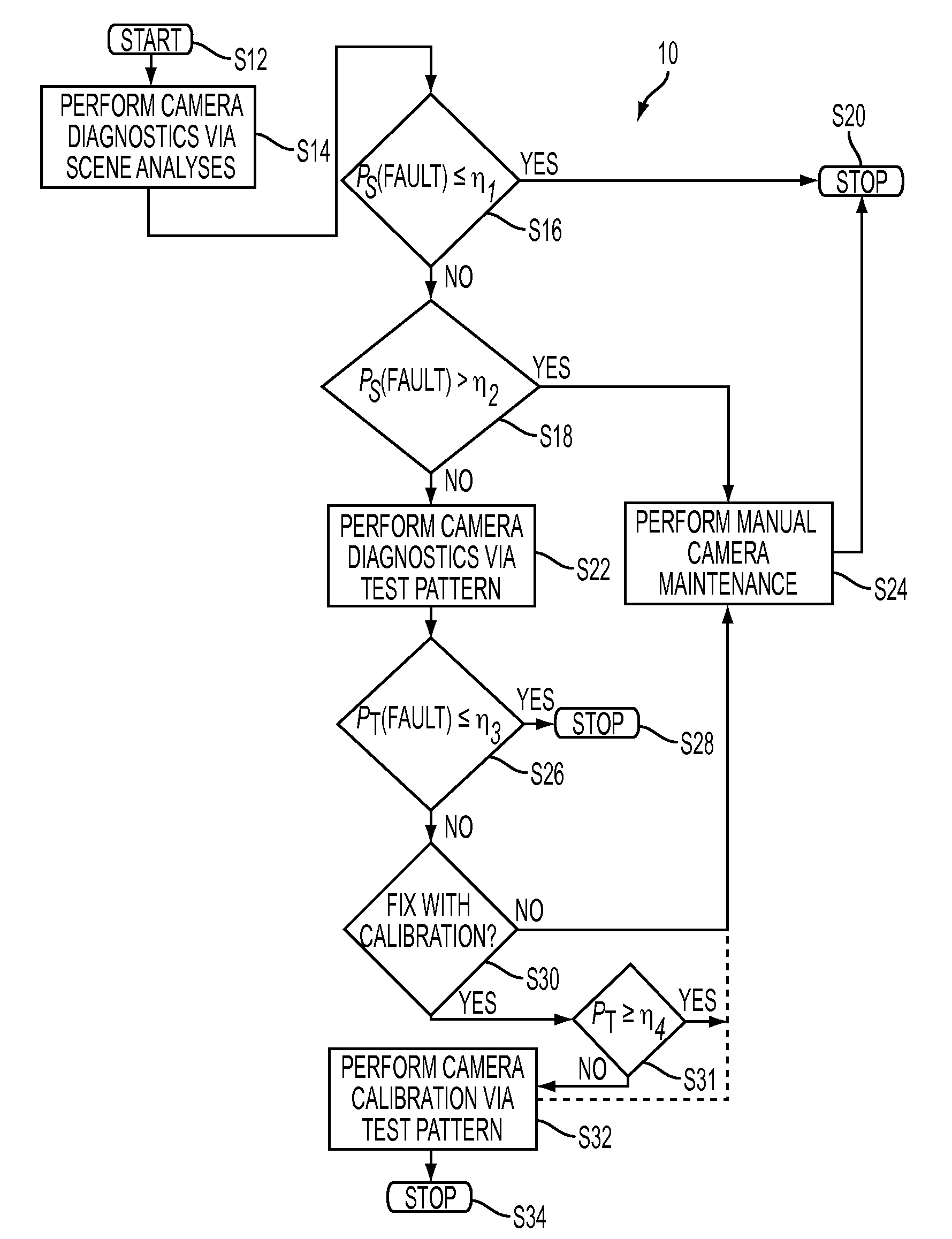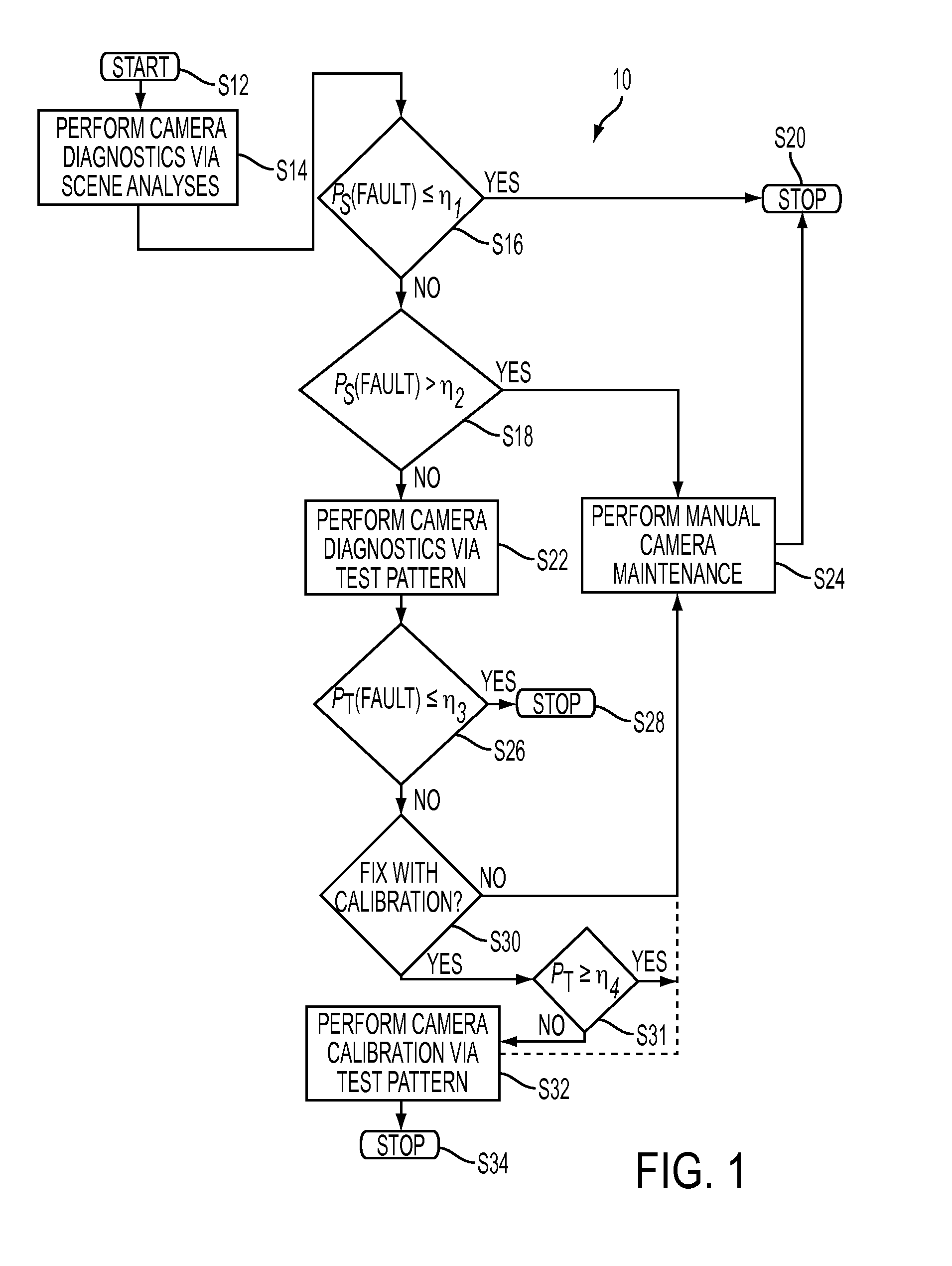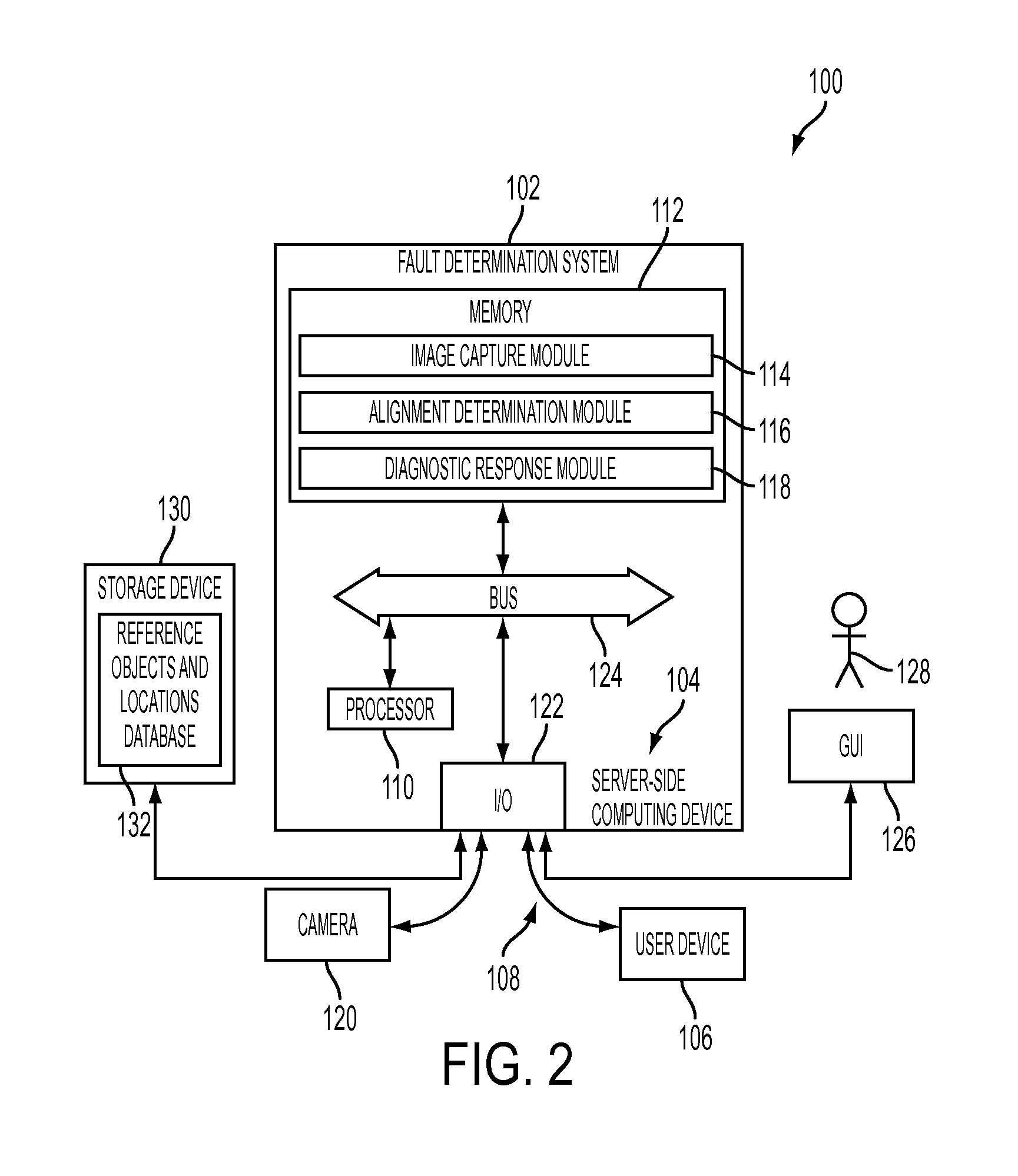Intelligent use of scene and test pattern analyses for traffic camera diagnostics
- Summary
- Abstract
- Description
- Claims
- Application Information
AI Technical Summary
Benefits of technology
Problems solved by technology
Method used
Image
Examples
Embodiment Construction
[0013]The present embodiment is directed to a system and method for performing traffic camera diagnostics using a multi-level approach including scene and test pattern analyses. Namely, the system uses thresholding results of a scene analysis to determine a possible camera fault and uses thresholding results of a test pattern analysis to confirm the suspected camera fault.
[0014]FIG. 1 provides an overview of the method 10. The system starts a diagnostic routine at S12. At S14, a scene analysis is performed on data that is extracted from an image frame of the scene that is captured by the camera. The scene analysis is used to determine a severity (i.e., a probability and / or likelihood) of the camera fault PS being tested, such as, in one example, the camera misalignment and / or displacement. The subscript S is used to denote that the camera fault PS is determined from scene analysis. The camera fault PS is compared to first and second thresholds η1 and η2 at S16, S18, whereby the seco...
PUM
 Login to View More
Login to View More Abstract
Description
Claims
Application Information
 Login to View More
Login to View More - R&D
- Intellectual Property
- Life Sciences
- Materials
- Tech Scout
- Unparalleled Data Quality
- Higher Quality Content
- 60% Fewer Hallucinations
Browse by: Latest US Patents, China's latest patents, Technical Efficacy Thesaurus, Application Domain, Technology Topic, Popular Technical Reports.
© 2025 PatSnap. All rights reserved.Legal|Privacy policy|Modern Slavery Act Transparency Statement|Sitemap|About US| Contact US: help@patsnap.com



